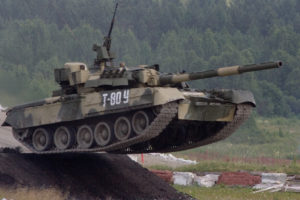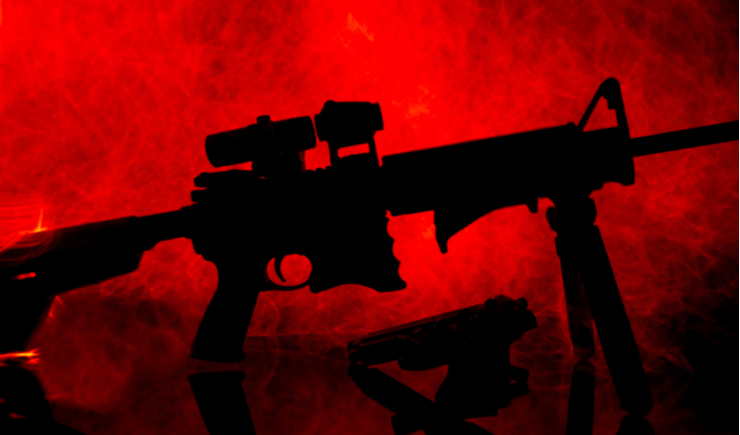 Russia is turning to its Soviet Era jet -propelled T-80 as it continues its Arctic military buildup. The Russian Defense Ministry decided that it was more cost effective to modernize the T-80 MBT, which are currently collecting dust in Army depots, than to build new models. The modernization package includes a greater fuel efficiency, modern thermal and laser systems, dynamic protection layers, and crew compartment modifications to withstand temps of -43.6 Fahrenheit.
Russia is turning to its Soviet Era jet -propelled T-80 as it continues its Arctic military buildup. The Russian Defense Ministry decided that it was more cost effective to modernize the T-80 MBT, which are currently collecting dust in Army depots, than to build new models. The modernization package includes a greater fuel efficiency, modern thermal and laser systems, dynamic protection layers, and crew compartment modifications to withstand temps of -43.6 Fahrenheit.
T-80 tanks with jet-propulsion engines have been gathering dust in army depots since the collapse of the Soviet Union. But to meet objectives to do with the development of the Arctic and security in that region, new armaments were needed – and instead of developing new models the Defense Ministry decided to upgrade existing ones.
Uralvagonzavod (Russia’s monopoly tank maker) has been working on the modernization of the T-80 tanks for the last six months. Prior to that the company signed a contract with the Defense Ministry for the supply of the upgraded machines.
On March 15 the ministry took delivery of models of the T-80 ready for service in the coldest regions of the country in the Far North. With the beginning of the opening up the Arctic the Russian army has faced the need to defend the country’s frontiers from a new direction. Instead of investing billions to produce new equipment and drain the state budget with extra spending, the country’s leadership decided to invest in the modernization of existing “dormant” equipment.
What has been modernized
Designers have managed to deal with the key shortcoming of the T-80 tank – its voracious appetite for fuel. Over the most demanding terrain it could consume as much as 2-4 times more fuel than the diesel-powered T-72. Now fuel consumption has been reduced to the level of the T-72 thanks to the simultaneous start-up of the engine and the generator. In simple terms, the designers have altered the engine to function in idling mode. The jet-powered engine that was fitted to the T-80 models of the late 1970s operated at full throttle both at top speed and when standing still.
The tank’s gun has been given modern thermal imaging and laser systems that increase its combat effectiveness at any time of day or night. The machine’s armor has also been covered with dynamic protection layers, and the crew compartment has been adapted to temperatures down to -40 Centigrade (-43.6 Fahrenheit). The 125 mm gun itself is unchanged, as are the large-caliber machine-guns fitted to the turret.
Source: Russia Beyond



